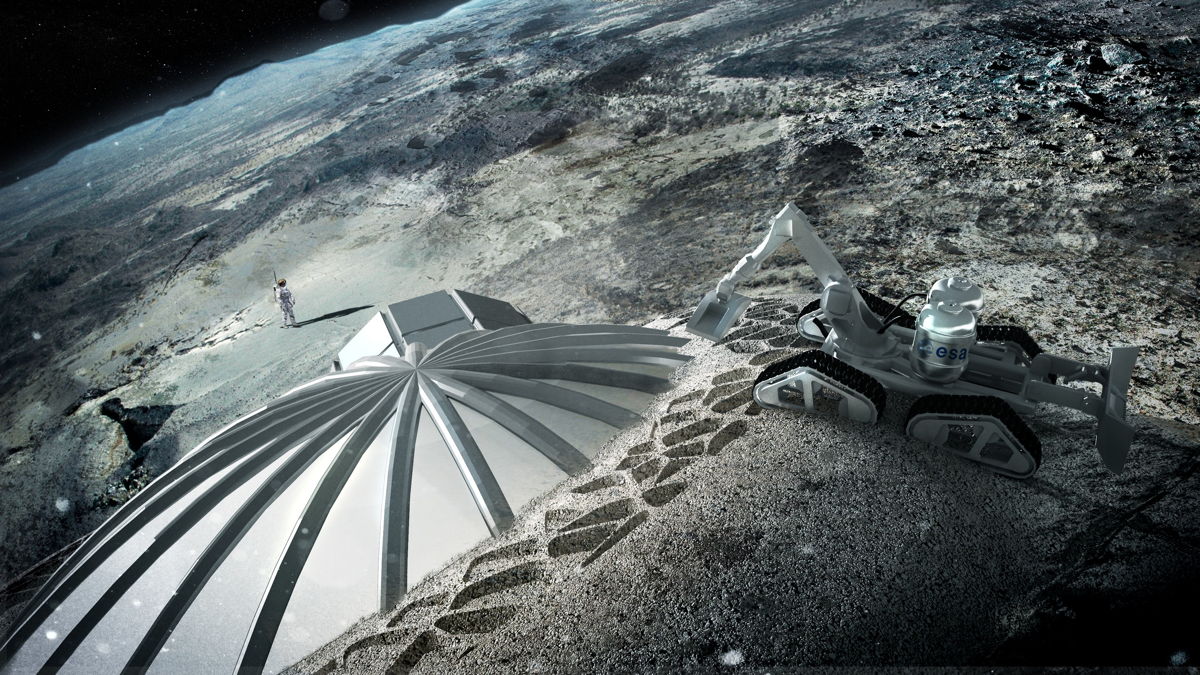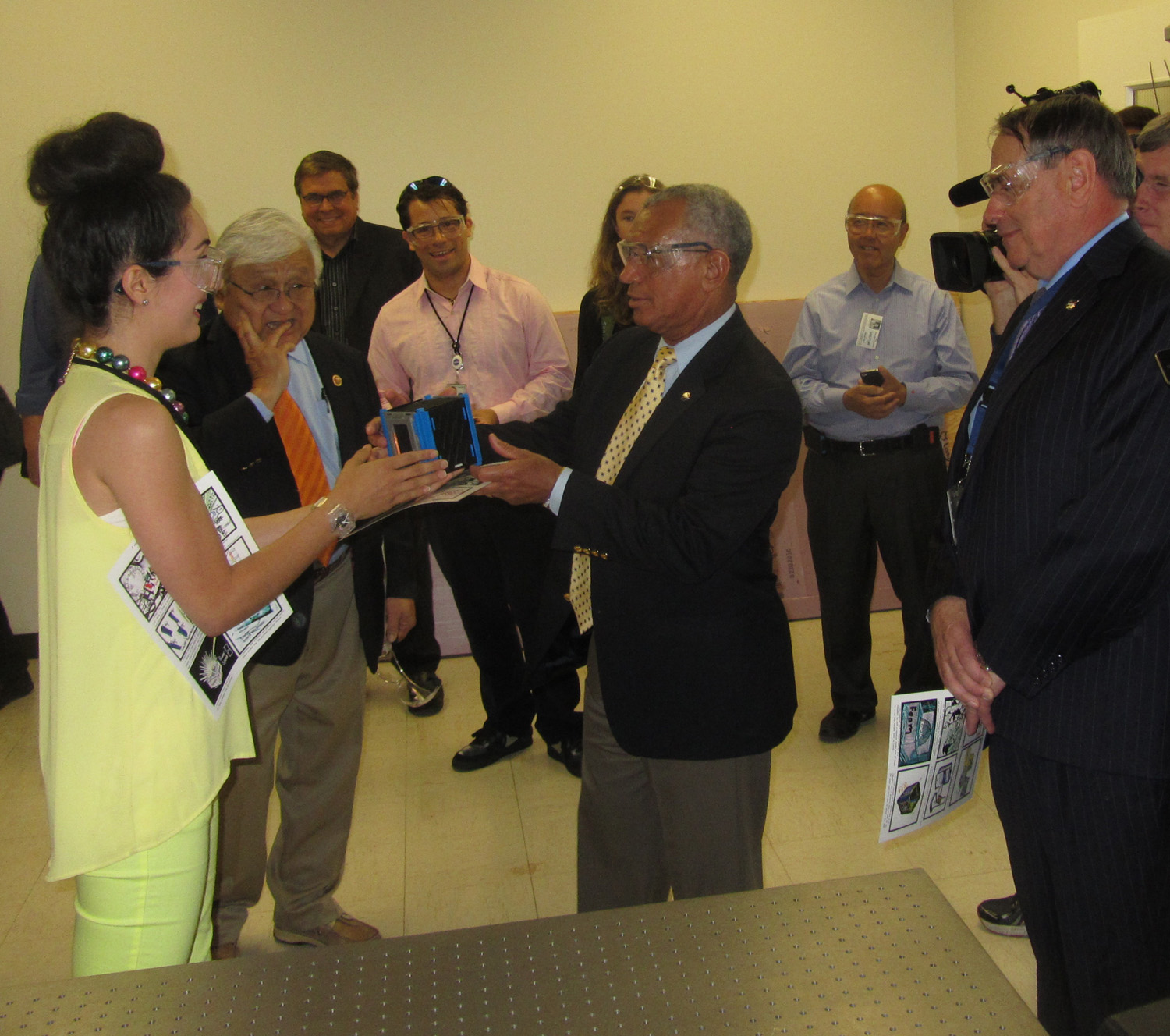
MOFFETT FIELD, Calif. — Technological advances are bringing down the cost of space research and exploration, with 3D printing poised to provide a transformative leap, NASA chief Charles Bolden says.
During a tour of the space agency's Ames Research Center here Friday (May 24), Bolden lauded the scientific potential of PhoneSats, tiny and inexpensive spacecraft based on off-the-shelf smartphones. And he singled out 3D printing as a promising key enabler of humanity's push out into the solar system.
"As NASA ventures further into space, whether redirecting an asteroid or sending humans to Mars, we'll need transformative technology to reduce cargo weight and volume," Bolden said. "In the future, perhaps astronauts will be able to print the tools or components they need while in space." [10 Amazing 3D-Printed Objects]
The future of spaceflight?
As proof that satellites don't have to be huge and expensive to observe our planet, Bolden pointed to the success of the Ames-led PhoneSat demonstration mission, which launched three modified Google Nexus One smartphones into orbit last month.
The three cubesats — known as Alexander, Graham and Bell — lifted off April 21 on the maiden flight of the private Antares rocket, which the Virginia-based firm Orbital Sciences Corp. will use to blast unmanned cargo missions toward the International Space Station for NASA.

All three PhoneSats operated normally until re-entering the atmosphere as expected on April 27, with two of them even beaming down pictures of Earth from space.
Get the Space.com Newsletter
Breaking space news, the latest updates on rocket launches, skywatching events and more!
"This is off-the-shelf technology used to do what would normally be called Earth science, looking back at Earth and giving us that capability for a very inexpensive price," Bolden said.
"The Phonesats themselves were much less than $10,000 apiece," he added. "And if we can get the cost per pound on the launch to go down, we'll be OK."
During his tour of Ames, Bolden also got a look at a prototype 3D printer built by the company Made in Space, which is slated to launch one of its machines to the International Space Station next year in the first test of off-Earth manufacturing.
NASA's interest in 3D printing is strong. The agency's Marshall Space Flight Center in Huntsville, Ala., for example, is partnering with Made in Space on the space station project. And NASA recently funded the development of a prototype "3D pizza printer" that could help feed astronauts on long space journeys, such as the 500-day trek to Mars.
Budget problems
While NASA is trying to bring the cost of spaceflight down over the long haul, the agency is dealing with financial problems in the short term.
The widespread federal cutbacks known as the sequester, which came into effect on March 1, reduced NASA's budget for the current year by nearly $900 million, to $16.8 billion. NASA has been weathering the storm so far, but it cannot continue to do so for much longer, Bolden said.
If the sequester continues into next year, for example, the agency's funding will be further cut to $16.1 billion, Bolden has said. That's a far cry from the $17.7 billion President Barack Obama set aside for NASA in his fiscal year 2014 budget request.
"If we stay under sequester — if the president and Congress are not able to come together and do what's absolutely necessary for the nation and solve the sequester problem — all bets are off," Bolden said.
Ames director Pete Worden said the center has managed to avoid furloughing employees by deferring building maintenance and cutting back on travel, among other measures. But he agreed with Bolden that such stopgap solutions could only last so long.
"We can get through this year, but if this continues, it's going to be really tough," Worden said. "It's really critical next year that the president's program is enacted, because that'll enable us to really go forward."
Bolden's time at Ames wrapped up a three-day tour of NASA's California research centers. He visited the agency's Dryden Flight Research Center on Edwards Air Force Base Wednesday (May 22) and its Jet Propulsion Laboratory in Pasadena a day later.
Follow Mike Wall on Twitter @michaeldwall and Google+. Follow us @Spacedotcom, Facebook or Google+. Originally published on SPACE.com.
Join our Space Forums to keep talking space on the latest missions, night sky and more! And if you have a news tip, correction or comment, let us know at: community@space.com.

Michael Wall is a Senior Space Writer with Space.com and joined the team in 2010. He primarily covers exoplanets, spaceflight and military space, but has been known to dabble in the space art beat. His book about the search for alien life, "Out There," was published on Nov. 13, 2018. Before becoming a science writer, Michael worked as a herpetologist and wildlife biologist. He has a Ph.D. in evolutionary biology from the University of Sydney, Australia, a bachelor's degree from the University of Arizona, and a graduate certificate in science writing from the University of California, Santa Cruz. To find out what his latest project is, you can follow Michael on Twitter.
